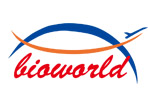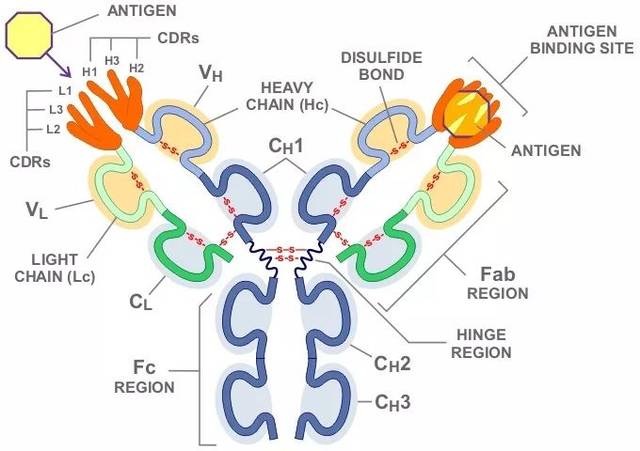Product Name :
Ly-6G/C Rat monoclonal antibody Background :
The Ly-6 complex is a series of genes found on chromosome 15. These genes code for a number of different proteins that can be used as surface markers. The family members vary in their biologic expression and have been shown to be involved in cell signaling and cell adhesion. The structure of these proteins includes a motif known as the LU domain that has three loops comprised of disulfide bonds. These bonds are formed by 8 to 10 cysteines that can cause differences in the length of the loops as well as the sequences at each tip. There are 11 known Ly-6 genes on murine chromosome 15 that code for different proteins. These family members, excluding secreted Ly6/Plaur domain containing 1 coded by the Slurp1 gene, are attached to the cell surface by a GPI anchor near the C terminus. The structure of these proteins may play a role in transmembrane interactions, and downstream signaling cascades. Ly-6 proteins have been widely used as differentiation markers on hematopoietic cells. The ability to isolate and express specific Ly-6 antibodies through hybridoma technology has allowed researchers to identify unique proteins. These proteins are expressed on subsets of immune cells at different stages of development, such as T cells, B cells, monocytes, granulocytes, and macrophages. The HK1.4 clone is widely used to activate T lymphocytes. Product :
Rat IgG2b kappa. Liquid in PBS, pH 7.3, and 0.02% sodium azide. Storage&Stability :
Store at 4°C short term. Aliquot and store at -20°C long term. Avoid freeze-thaw cycles. Specificity :
Recognizes mouse Ly-6G/C Immunogen :
Raised against granulocytes of mouse origin Conjugate :
Unconjugated Modification :
Unmodification
Ly-6G/C Rat monoclonal antibody Background :
The Ly-6 complex is a series of genes found on chromosome 15. These genes code for a number of different proteins that can be used as surface markers. The family members vary in their biologic expression and have been shown to be involved in cell signaling and cell adhesion. The structure of these proteins includes a motif known as the LU domain that has three loops comprised of disulfide bonds. These bonds are formed by 8 to 10 cysteines that can cause differences in the length of the loops as well as the sequences at each tip. There are 11 known Ly-6 genes on murine chromosome 15 that code for different proteins. These family members, excluding secreted Ly6/Plaur domain containing 1 coded by the Slurp1 gene, are attached to the cell surface by a GPI anchor near the C terminus. The structure of these proteins may play a role in transmembrane interactions, and downstream signaling cascades. Ly-6 proteins have been widely used as differentiation markers on hematopoietic cells. The ability to isolate and express specific Ly-6 antibodies through hybridoma technology has allowed researchers to identify unique proteins. These proteins are expressed on subsets of immune cells at different stages of development, such as T cells, B cells, monocytes, granulocytes, and macrophages. The HK1.4 clone is widely used to activate T lymphocytes. Product :
Rat IgG2b kappa. Liquid in PBS, pH 7.3, and 0.02% sodium azide. Storage&Stability :
Store at 4°C short term. Aliquot and store at -20°C long term. Avoid freeze-thaw cycles. Specificity :
Recognizes mouse Ly-6G/C Immunogen :
Raised against granulocytes of mouse origin Conjugate :
Unconjugated Modification :
Unmodification
Bioworld Biotech only provide peptides for our antibodies and do not provide additional peptide customization services.
Price/Size :
USD 368/1mg/vial
Tips:
For phospho antibody, we provide phospho peptide(0.5mg) and non-phospho peptide(0.5mg).Describe :
Blocking peptides are peptides that bind specifically to the target antibody and block antibody binding. These peptide usually contains the epitope recognized by the antibody. Antibodies bound to the blocking peptide no longer bind to the epitope on the target protein. This mechanism is useful when non-specific binding is an issue, for example, in Western blotting (WB) and Immunohistochemistry (IHC). By comparing the staining from the blocked antibody versus the antibody alone, one can see which staining is specific; Specific binding will be absent from the western blot or IHC performed with the neutralized antibody.Formula:
Synthetic peptide was lyophilized with 100% acetonitrile and is supplied as a powder. Reconstitute with 0.1 ml DI water for a final concentration of 10 mg/ml.The purity is >90%,tested by HPLC and MS.
Storage:
The freeze-dried powder is more stable. For short time at 2-8°C. For long term storage store at -20°C.
Note :
This product is for research use only (RUO only). Not for use in diagnostic or therapeutic procedures.
 Ly-6G/C Rat monoclonal antibody
Ly-6G/C Rat monoclonal antibody 
 Datasheet
Datasheet COA
COA MSDS
MSDS SHIP
SHIP